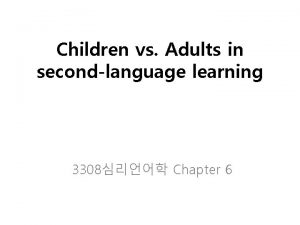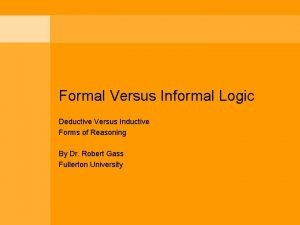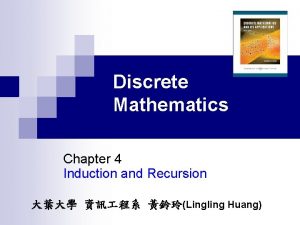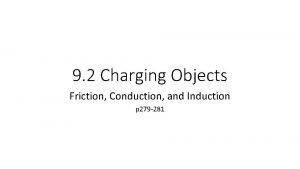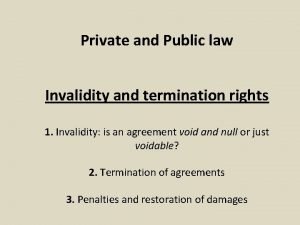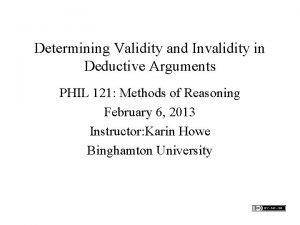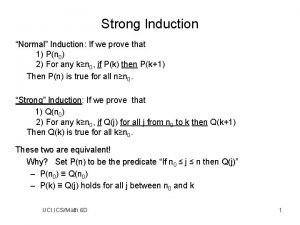Chapter 7 Induction Induction and Invalidity pp 50









- Slides: 9

Chapter 7: Induction

Induction and Invalidity (pp. 50 -51) • Any argument that is not a valid deductive argument is an inductive argument. • Notice: Given our definition of ‘induction’, not all inductive arguments proceed from claims regarding individuals to claims regarding classes of things.

Strength • Inductive arguments vary in strength, that is, some provide much better evidence for (reasons to believe) their conclusions than others. • Since any invalid deductive argument is an inductive argument, some are so weak that you might not be inclined to claim it’s an argument.

Kinds of Inductive Arguments: Generalizations (pp. 51 -56) • The most popular, although not the most common, kind of inductive is an inductive generalization. • Inductive generalizations typically go from claims made about individuals to claims made about classes of things, whether those claims are about all, or most, or only many members of a class. (See Chapter 26. )

Strength of the Conclusion • A claim made regarding an entire class of objects, for example, “All cats are nice animals, ” is extremely strong: It takes only one nasty cat to show that the general claim is false. • Claims regarding most members of a class are considerably weaker than claims regarding all members of a class, since to show that the claim is false you would need to show that there are over fifty percent of the members of the class of which the claim is not true. • Claims regarding many members of a class are weaker still, although the term ‘many’ is vague.

Inductive Counterexamples (p. 51) • An inductive counterexample is a statement whose truth shows that a general statement is false. • If Seal is a nasty cat, the statement “Seal is a nasty cat” would be sufficient to show that the general claim “All cats are nice animals” is false.

Arguments by Analogy (pp. 52 -53) • Arguments by analogy are based on comparisons between two or more objects. • Arguments by analogy do not reach a general conclusion. • Like all inductive arguments, the weaker the conclusion is, the stronger the evidence is for that conclusion. (Analogies are examined in detail in Chapter 25. )

Hypotheses and Best Explanation (pp. 53 -56) • Hypotheses are plausible explanations for a phenomenon. • You have argued from hypotheses in your science classes. • Arguments to the best explanation are inductive arguments that one explanation of a phenomenon is superior to another.

Conceptual Frameworks (pp. 53 -55) • A conceptual framework is a set of assumptions operative in presenting an argument or explanation. • The natural sciences assume as naturalistic framework, that is, they assume that all natural phenomena can be explained on the basis of natural laws and other events occurring in nature. • Not all conceptual frameworks are naturalistic.
 Recruitment selection and induction
Recruitment selection and induction What is analytic induction in qualitative research
What is analytic induction in qualitative research Explication and induction
Explication and induction 3-phase induction motor problems and solutions
3-phase induction motor problems and solutions Invalid and unsound argument examples
Invalid and unsound argument examples Environmental induction training ppt
Environmental induction training ppt Charging by induction
Charging by induction Informal deduction
Informal deduction Induction and recursion discrete mathematics
Induction and recursion discrete mathematics Conduction induction and friction
Conduction induction and friction


